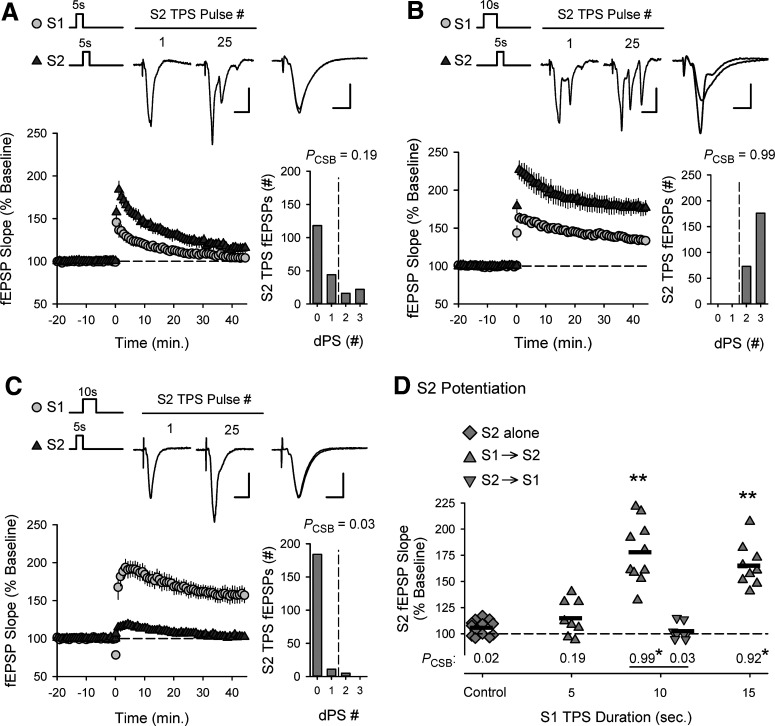Figure 5.
Activity- and pattern-dependent regulation of cooperativity in CS burst-dependent LTP. A, Five seconds of TPS delivered to S2 synapses had little lasting effect on synaptic transmission when S2 TPS follows a 5 s train of TPS delivered to S1 synapses (n = 8). B, Five seconds of S2 TPS delivered after a 10 s train of TPS delivered to S1 TPS induced robust LTP at S2 synapses (n = 10). C, S2 synapses were not potentiated when the pattern of S1/S2 TPS was reversed (5 s of S2 TPS delivered before 10 s of S1 TPS, n = 8). A-C, Histograms represent number of EPSPs that elicit 0-3 dendritic PSs during S2 TPS from all experiments. A-C, Traces represent the first and last fEPSPs elicited during S2 TPS train (left; calibration: 2.0 mV, 10 ms) and superimposed S2 fEPSPs recorded during baseline and 45 min after S2 TPS (right; calibration: 2.0 mV, 5.0 ms). D, Symbols represent change in S2 fEPSP slopes (45 min after S1/S2 TPS) from all individual experiments. Plot includes results from experiments shown in Figure 4C, D. Bars indicate mean values. **p < 0.001, compared with control, one-way ANOVA with Bonferroni t test post hoc comparisons (F(6,55) = 33.191, p < 0.001). Numbers indicate PCSB during S2 TPS. *p < 0.05, compared with control, one-way ANOVA on ranks with Dunn's test post hoc comparisons (H(4) = 40.375, p < 0.001).

